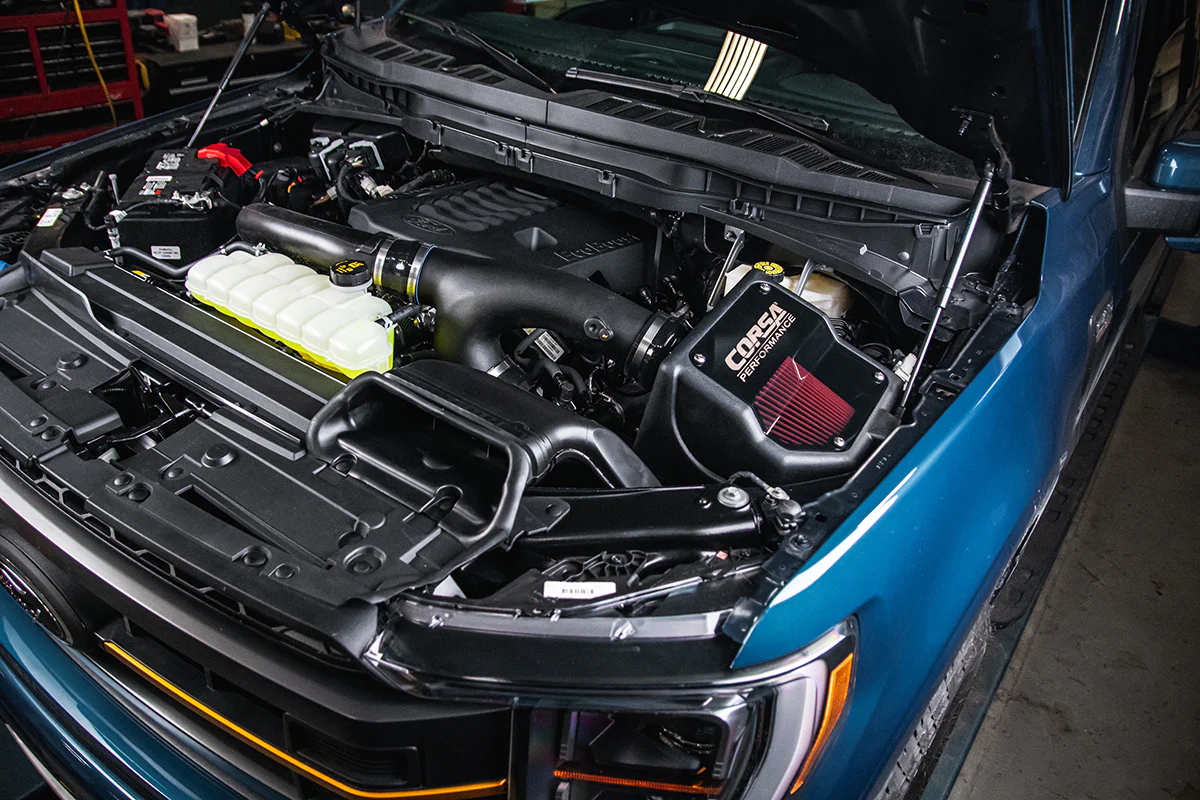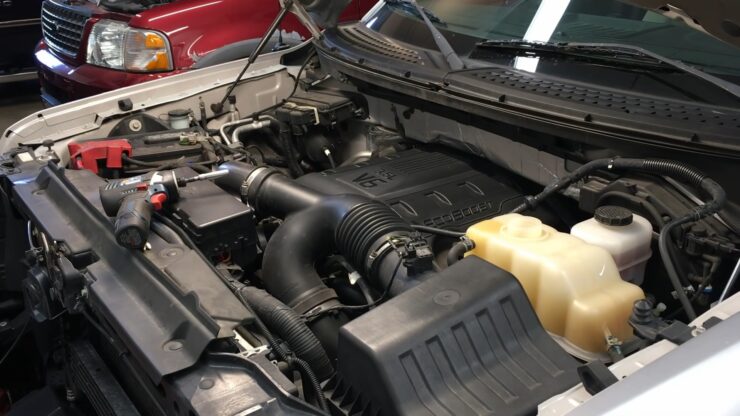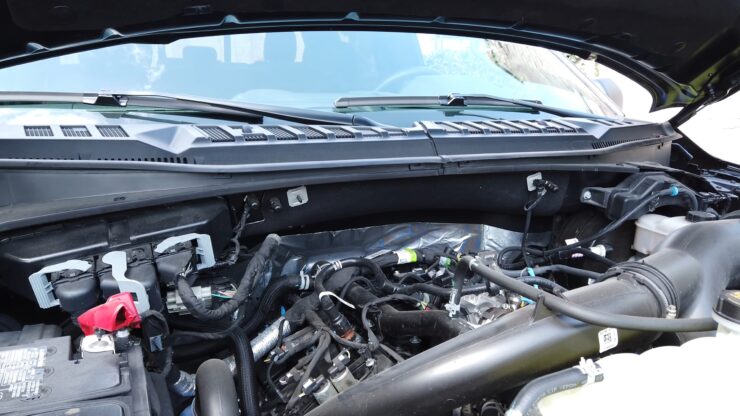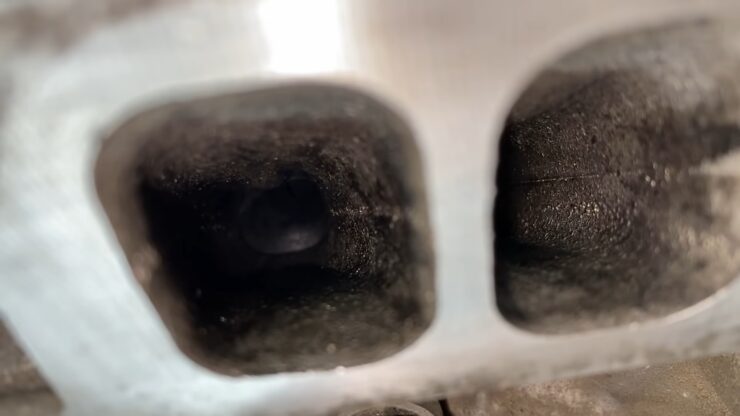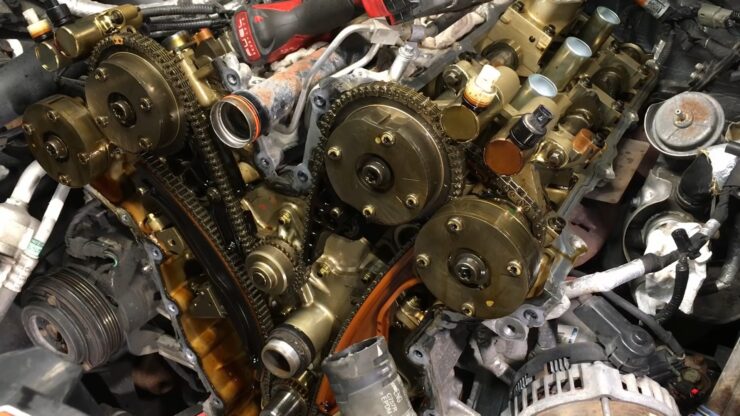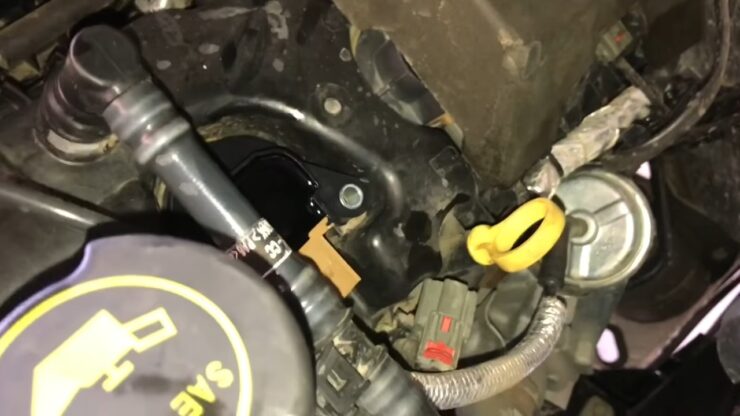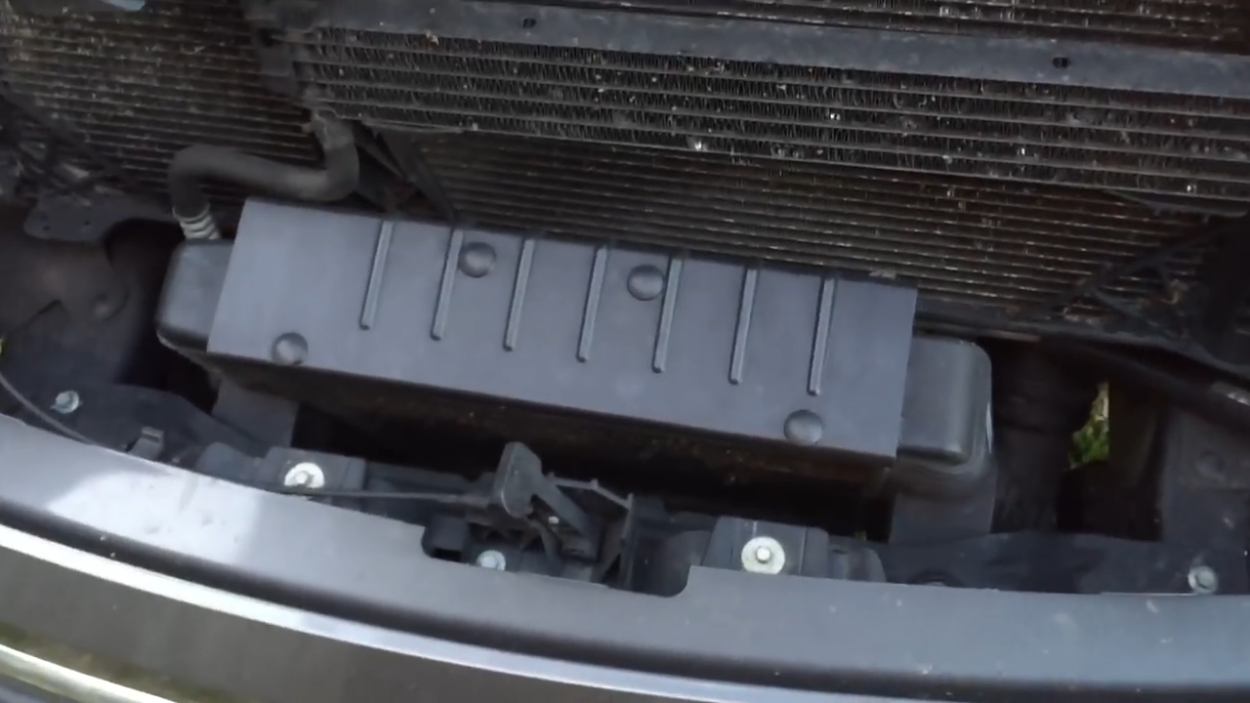The Ford 3.5 EcoBoost engine was first introduced in 2010 in models like the Lincoln MKS, MKT, Ford Flex, and Taurus SHO. This 3.5-liter twin-turbo V6 engine was later incorporated into various other Ford and Lincoln vehicles.
With a horsepower range of 355 to 647, it offers robust performance. Its turbocharging and direct injection features enhance fuel efficiency and reduce emissions. However, like all engines, the 3.5 EcoBoost has its imperfections, which we’ll get into.
Background on Ford 3.5 Twin Turbo V6
Before discussing the issues with the 3.5 EcoBoost, it’s essential to understand its history. There are two primary generations of this engine.
Ford made significant improvements in the second generation, enhancing its power, torque, and addressing some reliability issues.
1st Generation 3.5L EcoBoost
The first generation of the 3.5 EcoBoost was a pioneering effort for Ford, combining turbos, direct injection, and VVT. While it had minor issues, it was by no means a flawed engine.
Depending on the model, this generation produced between 355-380 horsepower. Its twin turbos ensured quick response and ample low to mid-range torque, making it suitable for towing and city driving.
- 2010-2019 Ford Flex
- 2010-2016 Lincoln MKS
- 2010-2019 Lincoln MKT
- 2010-2019 Ford Taurus SHO
- 2013-2019 Ford Explorer Sport & Platinum
- 2011-2016 Ford F-150
- 2015-2017 Ford Expedition
- 2015-2017 Lincoln Navigator
2nd Generation 3.5 V6 EcoBoost
Starting in 2017, Ford introduced the second generation of the EcoBoost engine in select models. This version saw an increase in horsepower, ranging from 375-450 in most vehicles. A special 647hp variant was designed for the iconic Ford GT. This generation also featured port-injection to combat carbon build-up and a re-designed timing chain for better reliability.
4 Prevalent Issues with the 3.5 EcoBoost Engine
Having covered the background, let’s get into the primary concerns associated with the Ford 3.5 EcoBoost engine:
- Carbon Build-up
- Timing Chain
- Cam Phasers
- Ignition System
The first two issues predominantly plague the 1st generation of the 3.5 EcoBoost engine. With the introduction of the 2nd generation, Ford effectively addressed many of these concerns. It’s worth noting that the 3.5 EcoBoost is generally a reliable engine.
Labeling carbon build-up and ignition system issues as “problems” might be a bit harsh. Carbon build-up is an inherent drawback of relying solely on direct injection. Similarly, issues with components like spark plugs and ignition coils stem from the challenges of turbocharging.
However, for clarity, we’ll get deeper into these concerns. It’s essential to understand that while these problems are termed “common,” they don’t necessarily afflict a significant portion of the 3.5 V6 engines. They’re just the usual suspects when issues arise.
Also, like all engines, the 3.5 EcoBoost can face other problems, especially as they age or accumulate mileage.
1) Carbon Build-up on 3.5 EcoBoost Intake Valve
This issue is more prevalent in the 1st generation engines. These engines rely solely on direct injection (DI), where fuel is directly sprayed into the combustion chamber.
Consequently, over time, carbon accumulates on the intake valves. All engines have some oil blow-by, which travels through the intake system and eventually settles on the intake valves.
In engines with port injection, the fuel helps clean the intake ports and valves, preventing excessive carbon deposits.
However, in engines relying only on DI, there’s no mechanism to clean the valves, leading to carbon build-up. This doesn’t immediately spell disaster. Many DI engines function throughout their lifespan without needing valve cleaning. Yet, excessive carbon can lead to power loss and other performance issues.
Ford addressed this in the 2nd generation 3.5 EcoBoost by incorporating both direct and port injection, effectively reducing carbon build-up.
Symptoms of Carbon Build-up in Ford 3.5 TT V6
If your 3.5 EcoBoost engine has excessive carbon deposits, you might notice:
- Misfires
- Rough idling
- Hesitation during acceleration
- Power loss
Most of these symptoms stem from misfires caused by uneven air intake due to carbon deposits. This disrupts the air-fuel ratio, leading to misfires, which can manifest as rough idling, fault codes, and hesitation.
Power loss is another symptom, but it’s often subtle, given that carbon build-up is a gradual process. It’s unlikely you’ll detect a slow power decline over several years.
3.5L EcoBoost Carbon Build-up “Fix”
Once the carbon deposits become excessive then you’ll want to consider walnut blasting the intake ports. The job requires a quality shop vac and walnut media shells. Otherwise, it’s mostly just the labor in accessing the intake ports. Shops often charge $400-600+ for this job, so it’s not exactly cheap.
Fortunately, it’s not an urgent item that needs to be done quickly and you may not even want to do it at all. Carbon deposits shouldn’t cause any serious longevity concerns for the 3.5 EcoBoost. We would still want to take care of the job, regardless. Expect walnut blasting to be good maintenance to complete every 70,000 to 100,000 miles.
2) Timing Chain Issues in Ford 3.5 EcoBoost
The Ford 3.5 EcoBoost engine, especially its 1st generation models from 2010-2014, has been known to experience timing chain problems. This issue seems to be more prevalent in the F-150 models, possibly due to the sheer popularity of this vehicle variant with the EcoBoost engine.
The primary concern revolves around the stretching of the timing chain. There have also been reported issues with the timing chain guides, tensioner, and cam phasers of the 3.5 EcoBoost. If any of these problems arise, it’s advisable to replace the entire timing chain assembly. Ford acknowledged these issues and released a service bulletin. For those whose warranties have expired, Ford might still offer some assistance.
It’s crucial to address these timing chain problems promptly. A complete failure of the timing chain can lead to more severe damage to the 3.5 EcoBoost engine. While such occurrences are rare, it’s always better to be safe and get the necessary repairs done without delay.
Symptoms of Timing Chain Issues in Ford 3.5L
If your 3.5 EcoBoost engine is facing timing chain problems, you might observe:
- Rattling noise during cold starts
- Diagnostic Trouble Code (DTC) P0016
- Illuminated check engine light
- Performance and drivability issues
Cold start rattling is a common indicator of potential timing chain issues, although other factors can also cause this noise. The engine might also display the P0016 fault code, activating the check engine light. A stretched timing chain can disrupt the ignition timing, leading to misfires, power loss, and rough idling.
Cost of Replacing EcoBoost Timing Chain
The replacement of the timing chain and its associated components is neither simple nor inexpensive. The process is labor-intensive, and the cost of parts can be significant. While you’re at it, you might also consider replacing other minor components. The total cost for the timing chain replacement can easily exceed a thousand dollars.
However, many 3.5 EcoBoost engines with faulty timing chains might have already undergone replacements. While this is a known issue with the EcoBoost, not every engine will encounter it.
Some believe that the problem might stem from inadequate maintenance, infrequent oil changes, or using 20w oils, which might be too thin for the engine.
Given that Ford has issued bulletins regarding this issue, they might offer discounts or other forms of compensation, even if the warranty doesn’t cover the problem.
3) Cam Phaser Concerns in the 3.5L Twin Turbo EcoBoost
The cam phaser rattle is another issue that has been identified in the Ford 3.5 EcoBoost engine, particularly in the 2nd generation models from 2017-2020. While the 2nd generation engine resolved the timing chain problems, it inadvertently introduced cam phaser issues. Thankfully, by 2020, Ford managed to rectify this problem.
The downside is that cam phaser issues are quite prevalent, especially in the 2017-2020 models. Recognizing the issue, Ford initiated the Customer Satisfaction Program 21N03, which effectively offers an extended warranty on cam phasers until January 1, 2024. However, the extent of coverage by Ford varies based on the vehicle’s mileage.
On the bright side, cam phaser problems don’t impact the engine’s performance or safety. While it’s not imperative to fix them, the rattle can be bothersome. It’s also advisable to replace the VCT phasers to prevent potential reliability issues in the future.
For a more in-depth understanding of the 3.5L EcoBoost cam phaser rattle, there are dedicated articles on the topic.
Signs of VCT Phaser Issues
Indications of cam phaser problems in the 3.5 EcoBoost engine include:
- Rattling during cold starts
- Engine shuddering
The rattle is most noticeable during cold starts, but some users have also reported it during acceleration. In extreme cases, the rattle might be persistent. Ford’s initial solution was to reprogram the PCM to mitigate the cam phaser rattle, as per Customer Satisfaction Program 21B10. However, this reprogramming occasionally led to engine shuddering, prompting Ford to release program 21N08, which reverted the 3.5 EcoBoost to its original programming.
Cam Phaser Replacement in 3.5 EcoBoost
If your 3.5 EcoBoost is covered under the extended warranty, Ford might bear all or a portion of the repair costs for the cam phasers. If your vehicle falls outside the warranty, it’s still worth reaching out to Ford’s corporate team, as they might offer assistance even if the warranty has expired.
If you’re left to bear the costs, be prepared for a labor-intensive repair. It’s advisable to replace other components in the vicinity during the repair, such as the timing chain, tensioner, guides, seals, gaskets, and all four cam phasers. The comprehensive repair could set you back anywhere between $2,000 to $3,000 at a standard repair shop.
4) Ignition System Concerns in Ford 3.5 V6
One of the aspects to consider with the Ford 3.5 EcoBoost engine is the wear and tear on its ignition system, specifically the spark plugs and ignition coils.
While it might be a stretch to label these as “problems,” it’s essential to understand that turbocharged, direct-injected engines inherently exert more stress on the ignition system due to high cylinder pressures.
In engines without turbochargers, spark plugs can last upwards of 70,000 miles, and ignition coils can last even longer. However, in the 3.5 EcoBoost twin-turbo engine, these components tend to wear out faster. This wear is often a result of standard usage, but premature wear isn’t uncommon.
Ignition System Wear Indicators
If the ignition components are failing, you might experience:
- Misfires
- Rough idling
- Stuttering or hesitation during acceleration
- Activation of the check engine light, typically indicating misfire codes
These symptoms are common indicators of worn-out spark plugs or ignition coils. If you’re facing such issues, it’s advisable to replace all spark plugs or ignition coils simultaneously, especially if they haven’t been changed in a while.
If you detect misfires, you can identify the faulty component by checking the fault codes to see which cylinder is misfiring. Swap the ignition coil from the misfiring cylinder with one from a functioning cylinder.
If the misfire shifts to the new cylinder, the coil is likely the culprit. If the misfire remains, consider replacing the spark plugs.
Replacement of Spark Plugs & Ignition Coils in Ford 3.5L
Determining the root cause of the issue is crucial. Often, spark plugs are the primary culprits due to their shorter lifespan compared to ignition coils. A set of six spark plugs for the Ford 3.5 EcoBoost typically costs between $40-100, depending on the source. Replacing them is a straightforward task that most can handle within an hour or two.
Ignition coils are slightly more expensive, ranging from $200-300 for a set. However, replacing them is even simpler than changing the spark plugs. If you’re not comfortable doing it yourself, a repair shop should be able to handle the task for under $100 in labor.
5) Intercooler Condensation in Ford 3.5 EcoBoost
Intercooler condensation is another issue observed in the Ford 3.5 EcoBoost engine, particularly in the 1st generation models. This problem arises due to the design of the intercooler, which can accumulate moisture under certain driving conditions.
The purpose of the intercooler is to cool the compressed air from the turbochargers before it enters the engine, improving performance and efficiency. However, the cooling process can sometimes cause condensation to form inside the intercooler. In humid conditions or during extended idling, this moisture can build up and potentially be ingested into the engine, leading to performance issues.
Symptoms of Intercooler Condensation
If your 3.5 EcoBoost engine is experiencing intercooler condensation, you might notice:
The symptoms are typically more pronounced in humid conditions or after prolonged periods of idling, such as in traffic.
Fixing Intercooler Condensation in 3.5 EcoBoost
Ford has addressed this issue in several ways over the years, including redesigning the intercooler and adding a moisture drain. For owners of older models experiencing this problem, there are a few potential solutions:
- Intercooler Replacement or Upgrade: Upgrading to a newer design intercooler that includes a moisture drain can help alleviate the problem.
- Installing a Catch Can: A catch can can be installed to trap oil and moisture before it reaches the intercooler, reducing the risk of condensation.
- Driving Habits: Avoiding prolonged idling and driving in a way that maintains airflow through the intercooler can also help reduce condensation buildup.
Cost of Addressing Intercooler Condensation
The cost to address intercooler condensation issues can vary widely depending on the chosen solution. Upgrading to a newer intercooler design can cost several hundred dollars for the part alone, plus labor costs if installed by a professional. Installing a catch can is generally less expensive, with kits typically costing between $100-$200. Adjusting driving habits incurs no cost but requires conscious effort from the driver.
Ford 3.5 EcoBoost Engine: A Reliability Overview
The Ford 3.5 EcoBoost engine is often questioned for its reliability. However, based on our assessment, this twin-turbo engine is commendably reliable. The engine doesn’t have a long list of recurring issues, and Ford has been proactive in addressing concerns, especially with the introduction of the 2nd generation 3.5 EcoBoost.
While the reliability of any engine can sometimes boil down to luck, proper maintenance plays a pivotal role. Regular oil changes, using high-quality oils, and addressing any issues promptly can significantly enhance the engine’s lifespan.
With proper care, the 3.5 EcoBoost engine promises a robust and dependable performance. The turbocharged nature of the engine does necessitate some additional maintenance, but the benefits in terms of power, fuel efficiency, and towing capacity make it worthwhile.
Many 3.5L V6 EcoBoost engines can effortlessly surpass the 200,000-mile mark, which speaks volumes about their longevity.
FAQ
In Summary
While the Ford 5.0 Coyote engine has its merits, the 3.5 EcoBoost stands out for its balanced performance in terms of power, torque, efficiency, and towing capabilities. The twin-turbo setup also offers substantial tuning potential for enthusiasts seeking more from their engines.
The 1st generation of the 3.5 EcoBoost did face challenges, notably with timing chain failures and carbon build-up. However, these issues aren’t as widespread as some might think. The inherent nature of direct injection does lead to carbon deposits on intake valves, but Ford has been proactive in addressing these concerns.
It’s essential to remember that turbocharged engines, by design, demand more from their components. Components like spark plugs and ignition coils are under constant stress due to the turbo’s boost pressures. Additionally, with more components in play, there’s a higher chance of potential failures.
However, turbo technology has evolved significantly over the years. With diligent maintenance, the Ford 3.5 EcoBoost engine can offer a blend of reliability and exhilarating performance.

